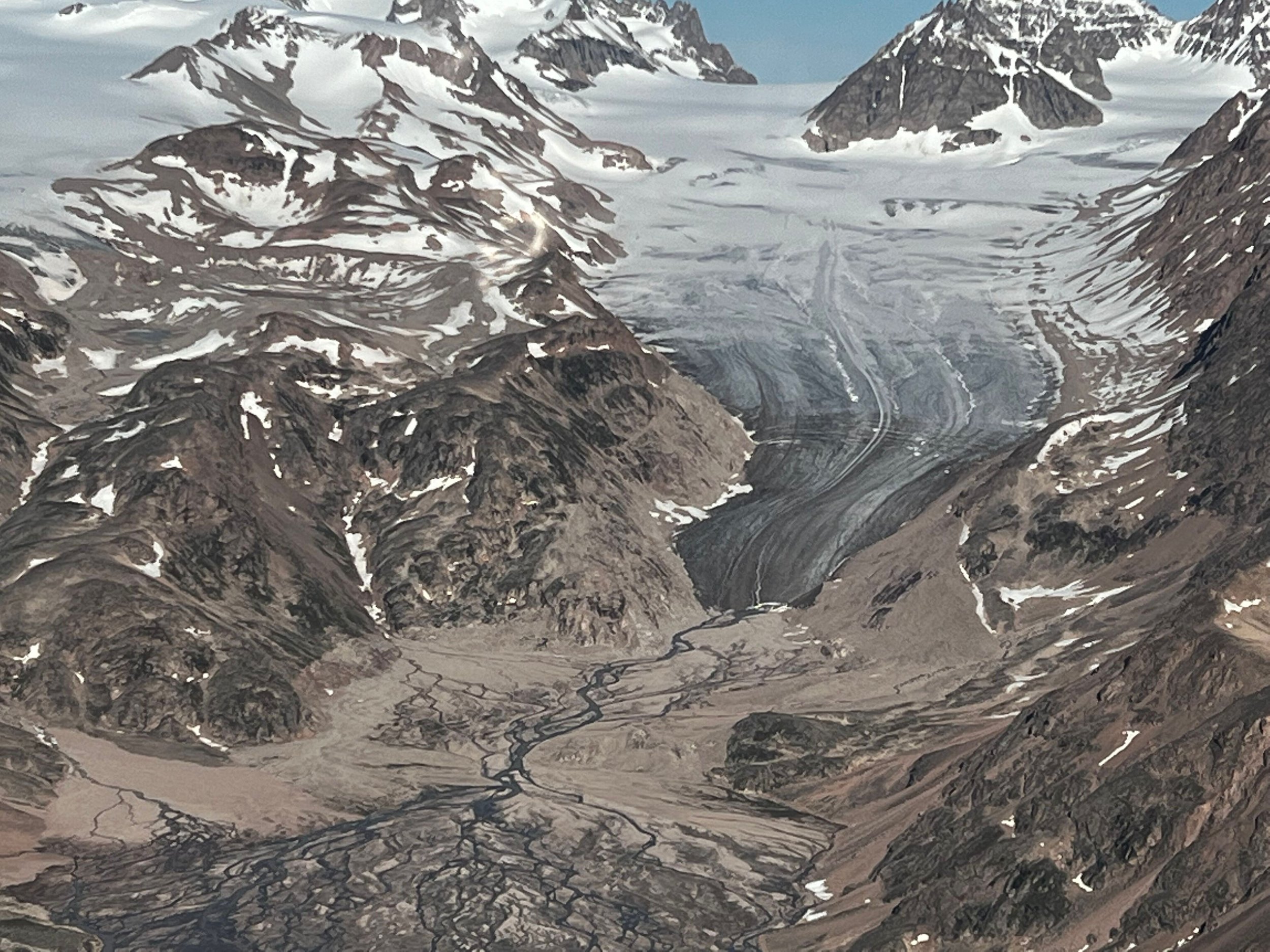
Mountain Glacier Contribution to Sea Level
CE 1900-2100
Shrinking Mountain Glaciers have become icons of climate change. Tens of thousands of glaciers of different sizes and character respond sensitively to the intensifying warming, and the accelerating glacier retreat impacts alpine systems and downstream communities dramatically around the globe. Shrinking Mountain Glaciers also considerably contribute to Sea Level Rise (SLR), but stunningly, the predictions of mountain glacier contribution to SLR over the next decades remain less well known than that of the polar ice sheets. This is caused by major challenges including (i) the large number of mountain glaciers (tens of thousands) and their individual complexities; (ii) modern satellite observations of glacier volume change are mostly limited to the last 20 years, which is not long enough to calibrate glacier dynamic models (which typically are on multi-decadal to centennial time scale); (iii) the limitations in computing power to model glacier change time-series of the huge amount of mountain glaciers and their impact on the solid-earth response.
Drawing by Bühlmann from the year 1836 CE (Skizzenbücher Bd. 10, 256, Graphische Sammlung ETH, Zürich) showing the Tsidjiore Nouve Glacier on the right, the Arolla Glacier on the left and the village Arolla in the front. Glacier terminus positions are close to their Little Ice Age peak extent.
Google Earth picture of approximately the same view in the year 2009 CE.
The trans-disciplinary MAGIC project is designed to tackle these challenges, and in turn, to address one of the critical tasks of modern Geosocietal Science: Providing robust and accurate predictions of mountain glacier melt rates across the globe together with its contribution to Sea Level Rise on the global and local scale, and to evaluate the first order impacts of glacier change on societies. The PI team approaches this problem by combining geologic reconstructions of glacier change over the last century or more, with satellite observations, to establish a multi-decadal to centennial calibration framework for a new generation of glacier models. The bottleneck of computing glacier changes across the globe is tackled by novel Artificial Intelligence approaches.
The improved estimates of glacier change are then used to model the response of the solid earth and gravity field to this local and regional unloading, providing the most complete estimate of local, regional, and global patterns of SLR. The integrated societal impact program of MAGIC will evaluate the risk exposure of communities impacted by changing glaciers together with its adaption strategies such as migration. The inter-linked MAGIC story-telling module produces a film narrating the journey of the glacial melt-water from its birth at the icy peaks of the high Andes all the way to the Pacific Ocean, in turn documenting the impacts on communities from the glacier to the ocean. All of the MAGIC science and outreach activities are to be based on a core of diverse PhD students and postdocs across all participating institutions, expected to be the nucleus of a wider education network, including interested students and junior scientists across the US and abroad.
Recent Updates
AI Workshop at University of Utah, February 19 - 21, 2024
The workshop consisted of a mix of teaching and project work, focused on AI and MAGIC. Our co-PI, Simon Brewer, led the team to identify appropriate AI targets for the aspects of the MAGIC project that the team members are working on or are interested in working on. This workshop also has a mix of short presentations by PIs and students, including some guided walk throughs of Machine Learning and AI models.
Workshop at Lamont Campus, June 28 - 30, 2023
Our first in person project workshop, where we got to know each other, listened and learned from the different expertises and scholarships, and identified first ‘early products’ of this project. The work already done for this project was reviewed, documented, and plans were created for the next steps (including publications and fieldtrips) and for synergy potential by connecting to project members with complementary expertises.
Patagonia Field Academy, March 11 - 16, 2024
During the 5-day expedition in Patagonia, our research team investigates a diverse range of topics, including:
Post-last glacial maximum changes; notably the Southern Patagonia ice sheet melt caused significant change
Glacier accumulation and ablation processes
Stratigraphy and freeze core sampling techniques
Glacial isostatic adjustment and solid earth modeling studies
The sociological aspect and anthropology angle of our research
The Tschierva Glacier, Engadin, Swiss Alps; CE 1890 and today.Climate Change Communication & Storytelling
The feature length film (30-80 min), Top-Down/Bottom-Up, will capture a deep-dive examination of a singular and outstanding example of the impacts of changing ice-volume on communities down-stream of mountain glaciers to the ocean.











